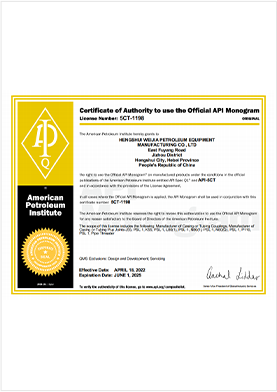- Afrikaans
- Albanian
- Amharic
- Arabic
- Armenian
- Azerbaijani
- Basque
- Belarusian
- Bengali
- Bosnian
- Bulgarian
- Catalan
- Cebuano
- Corsican
- Croatian
- Czech
- Danish
- Dutch
- English
- Esperanto
- Estonian
- Finnish
- French
- Frisian
- Galician
- Georgian
- German
- Greek
- Gujarati
- Haitian Creole
- hausa
- hawaiian
- Hebrew
- Hindi
- Miao
- Hungarian
- Icelandic
- igbo
- Indonesian
- irish
- Italian
- Japanese
- Javanese
- Kannada
- kazakh
- Khmer
- Rwandese
- Korean
- Kurdish
- Kyrgyz
- Lao
- Latin
- Latvian
- Lithuanian
- Luxembourgish
- Macedonian
- Malgashi
- Malay
- Malayalam
- Maltese
- Maori
- Marathi
- Mongolian
- Myanmar
- Nepali
- Norwegian
- Norwegian
- Occitan
- Pashto
- Persian
- Polish
- Portuguese
- Punjabi
- Romanian
- Russian
- Samoan
- Scottish Gaelic
- Serbian
- Sesotho
- Shona
- Sindhi
- Sinhala
- Slovak
- Slovenian
- Somali
- Spanish
- Sundanese
- Swahili
- Swedish
- Tagalog
- Tajik
- Tamil
- Tatar
- Telugu
- Thai
- Turkish
- Turkmen
- Ukrainian
- Urdu
- Uighur
- Uzbek
- Vietnamese
- Welsh
- Bantu
- Yiddish
- Yoruba
- Zulu
Specifications and Applications of 6 Inch Well Casing Couplings for Effective Installation
Understanding 6-inch Well Casing Couplings An Essential Component for Groundwater Extraction
In the realm of groundwater extraction and well construction, the components used are critical to the efficiency and longevity of the system. One such crucial component is the well casing coupling, specifically the 6-inch well casing coupling. This article will delve into the importance, design, types, and applications of 6-inch well casing couplings in groundwater wells.
What is a Well Casing Coupling?
A well casing coupling is a connector used to join sections of casing together. The casing itself is a tubular structure that lines the interior of a borehole to stabilize the well, preventing the collapse of the walls and protecting the groundwater from contamination. The coupling, therefore, plays a vital role in maintaining the integrity of the casing system.
Importance of 6-Inch Size
The 6-inch dimension refers to the diameter of the well casing. This size is commonly used for residential and light commercial wells. Choosing the right casing diameter is crucial as it affects the flow rate, the amount of groundwater that can be extracted, and the overall efficiency of the well. A 6-inch well casing is often adequate for average water needs, striking a balance between sufficient water flow and manageable installation costs.
Design and Construction
6-inch well casing couplings are typically made from durable materials such as stainless steel, PVC, or galvanized steel. The choice of material often depends on the specific application, the type of soil, the expected water chemistry, and regulatory requirements. Couplings are designed to ensure leak-tight connections, which are essential to prevent groundwater from contaminating surrounding areas.
The design of these couplings usually incorporates threads to facilitate a screw-on connection with the casing pipe. Some couplings may also come with a rubber gasket or O-ring that provides additional sealing, preventing water leaks and ensuring optimal performance.
Types of Couplings
6 inch well casing coupling

There are two primary types of 6-inch well casing couplings threaded and welded
.1. Threaded Couplings These are the most common type and feature male and female threads on either end. They allow for easy assembly and disassembly, which can be beneficial during maintenance or if repairs are required.
2. Welded Couplings In situations requiring a more permanent connection, welded couplings may be utilized. These couplings involve welding the casing sections together, providing a robust seal. However, while this method offers enhanced durability, it could complicate repairs due to the need for specialized equipment and skills.
Applications
6-inch well casing couplings are widely used in various applications, including
- Agricultural Wells Farmers often rely on 6-inch well casings to extract sufficient groundwater for irrigation, ensuring their crops have an adequate water supply.
- Municipal Water Supply Cities and towns use 6-inch wells to provide water to residents. These couplings ensure that the water supply is stable and reliable.
- Geothermal Systems In geothermal applications, 6-inch casings are used to extract or inject fluids, tapping into underground heat sources for energy efficiency.
Conclusion
The role of a 6-inch well casing coupling in well construction and groundwater extraction cannot be overstated. By understanding their design, types, and applications, users can make informed decisions about their groundwater systems. Proper installation and maintenance of these couplings not only enhance the performance of a well but also contribute to sustainable groundwater management, ensuring that resources remain available for future generations. Whether for residential use, agriculture, or municipal supply, the 6-inch well casing coupling is an essential component in the quest for efficient and safe groundwater extraction.
-
Tubing Pup Joints: Essential Components for Oil and Gas OperationsNewsJul.10,2025
-
Pup Joints: Essential Components for Reliable Drilling OperationsNewsJul.10,2025
-
Pipe Couplings: Connecting Your World EfficientlyNewsJul.10,2025
-
Mastering Oilfield Operations with Quality Tubing and CasingNewsJul.10,2025
-
High-Quality Casing Couplings for Every NeedNewsJul.10,2025
-
Boost Your Drilling Efficiency with Premium Crossover Tools & Seating NipplesNewsJul.10,2025







